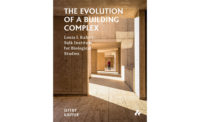Krueck and Sexton Architects
Chicago
Like the imposing towers lining the edges of New York’s Central Park, the street wall of historic skyscrapers fronting on Chicago’s Grant Park exist as built topography—a man-made cliff of stone and brick that includes such seminal structures as Adler & Sullivan’s robust Auditorium Building. Now, with the completion of the Spertus Institute of Jewish Studies by Chicago architects Ron Krueck and Mark Sexton, this mighty street wall—a mile and a half long—has made a dazzling leap into the 21st century. The 10-story building resembles a shimmering piece of quartz exquisitely inserted into a great stone wall, its faceted, folded facade of glass glinting in the morning sun.
While Spertus may appear to be yet another one-off “icon building,” it actually imparts several broader lessons. It is, first, a cultural building on a budget, with a construction cost of just $39 million—far less than the recent crop of spectacular museums whose price tags typically exceed $100 million. It is, second, a creative essay in Jewish architecture, eschewing facile iconography or familiar historicism for its beguiling study in light. Lastly, it is, like Steven Holl’s much-praised Bloch Building at the Nelson-Atkins Museum in Kansas City, Missouri, an exercise in complementary contrast, with the new subtly juxtaposed to the old instead of trying to outshout it.
For both architect and client, the building represents a felicitous debut on a broader stage. Krueck and Sexton’s commissions have tended to be quiet triumphs, like the firm’s skilled 2005 restoration of Mies van der Rohe’s Crown Hall. For its part, Spertus, a leading Jewish institution in the Midwest, with three interrelated divisions—Spertus College, the Asher Library, and the Spertus Museum—was stuck in a remodeled turn-of-the-century office building. In a move straight out of The Fountainhead, the building suffered an International Style makeover in the 1950s that concealed its cultural identity. Inside, the institute’s three divisions were separated from each other by a conventional stack of office floors. “People would come in and they would say, ‘Spertus is dead. Why doesn’t anybody come here?’ ” recalls the institute’s ebullient president, Howard Sulkin. “There would be 700 people in the building. There was no way you could know that because everything was compartmentalized.” For its new home, located directly north of the old one on a former vacant lot, Spertus chose Krueck and Sexton over three highly regarded finalists—James Stewart Polshek, Tod Williams and Billie Tsien, and Rafael Pelli. The winning team wasn’t just brilliant, they were the best listeners, Sulkin said at the time.
Nevertheless, it took Krueck and Sexton several tries to develop a scheme that achieved the delicate balance of form and identity the client sought: A bold contemporary statement that would, of necessity, respond sensitively to the Michigan Avenue street wall, which Chicago had declared a landmark district in 2002. At the same time, the building would seek to communicate the Jewish values of learning and culture through light while it expressed the institute’s identity as a civic institution, “not a ghetto institution,” as Sulkin puts it.



